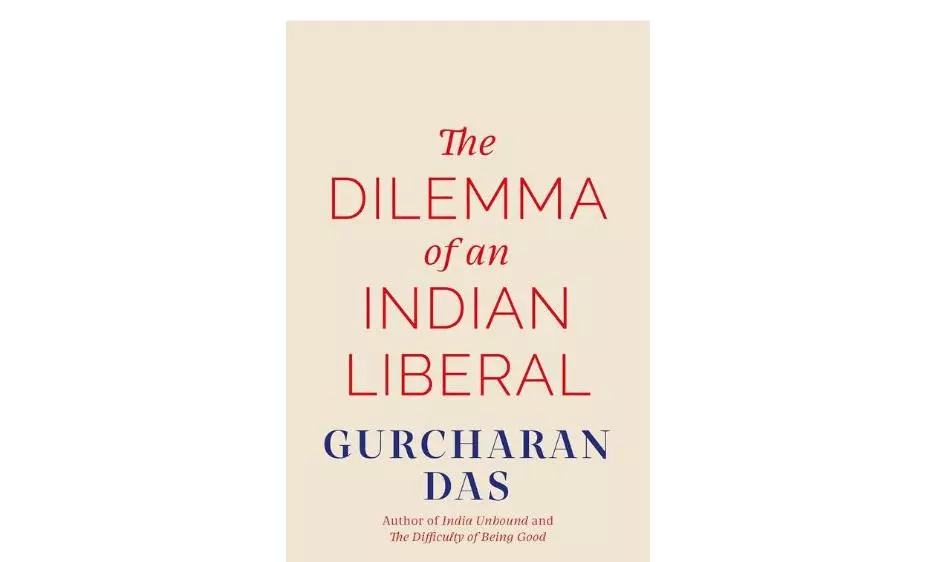Book Review | India, essentially liberal? If not, should we celebrate the death of its promise?

The author is a retired corporate honcho and a marketing wizard. The latter talent is on display as he reels in the reader by urging them to go straight to the heart of the book in Chapter 4. This unique, personalised account of what it means to be, and feel like, a Liberal lists 28 vignettes (he calls them milestones in expectedly, corporate jargon), stretching from 1947 to 2024, which converted this brahmin from a conservative family to a Liberal personally, and a bania (his words) professionally. The two usually go together. Readers will note the similarities with Margaret Thatcher, Prime Minister of the UK, another Liberal, who delighted in identifying herself as a grocer’s daughter.
It is August 1947. His mother is giddy with the joy of India becoming free! The five-year-old associates freedom to choose with well-being, later linking it to democracy. Lahore, his birthplace, is no longer safe for Hindus. The family flees to India. At Jallandhar railway station he witnesses the murder of a Muslim policeman whilst standing guard, by two men, possibly seeking revenge, amidst the carnage of Partition. The boy is revolted by religious frenzy, eventually leading to a conviction that religion is a private matter, not to be co-opted into public affairs — a prime liberal assumption. In 1955 an American school principal blocks the “brown” boy from getting admitted into a course leading to university. America’s roads are paved with gold, but race mattered (till 1965 when universities were desegregated) in this “liberal wonderland”, just like caste back home in India.
By 1963 the young man is in Bombay where the city’s entrepreneurial (liberal) genes lift his spirits and all boats, including upper caste migrants like him, and street dweller Munna Bai, who is happy just to escape into the city’s shanties from wretchedly oppressive, village life. In 1975 Pakistan is divided and Bangladesh liberated, chastening “arrogant, illiberal leaders who impose majoritarian whims” on minorities. In 1977 Indira Gandhi tries to validate her autocratic usurpation of emergency powers via an election. She loses, illustrating that “dictators are never as strong as they imagine and people never as weak as they think”. “In the golden summer of 1991” (economic) liberalism triumphs under the Narasimha Rao- Manmohan Singh double-engine but the roots are weak. Reform is implemented by stealth not popular consensus, unlike in the UK where Thatcher spent 20 per cent of her time implementing reforms and 80 per cent of the time selling the concept.
By 2001 liberalism dies in America, its heartland, killed by Osama Bin Laden who converts an “open, confident society into fearful and paranoid”. Actually, America has been there before, during the McCarthy Cold War witch-hunt for Communists in the 1950s. In 2002 liberalism takes a cold shower in India when genial Atalji fails to support Arun Shourie’s proposal in the BJP’s Goa meeting that Chief Minister Modi resigns to atone for the Gujarat riots. In 2014 liberalism triumphs as the middle class, grown to 20 per cent of the population by the economic reforms, sweeps the BJP and Narendra Modi to power as Prime Minister on the back of liberal promises — no to corruption, yes to small government, more jobs, better public facilities. By 2024 the liberal dream in India fades at the altar of majoritarianism and the vote bank realpolitik of welfare handouts, protectionism, and global isolation and emerging statism. Democracy is degraded in the countries where it originated. The author, an optimist by temperament and training, is dismayed.
Sadly, the author has been there before. In 1968 he joins the Swatantra Party founded in 1959, which comprised urban (usually overseas-educated, hence well-off) professionals, thinkers and business folks attracted to liberal ideals. Unsurprisingly, it fails to put the political grass on fire in rural, barely educated, poor India and extinguishes itself.
Interested readers could go back to the first three chapters where the author — a philosophy graduate, takes a master class in plain English on who is a Liberal, traces its development since the mid-18th century and examines the cultural roots of liberalism in the Indian tradition, a bit implausibly, per Babasahib Bhim Rao Ambedkar, who saw none exhibited in everyday life.
The last part of this engaging, short read is more generic on why liberalism has shallow roots in India. Might we be too poor to afford liberalism which relies overwhelmingly on a “confident” (read non-poor per Amartya Sen) people ruling themselves? The rapid rise of statist China makes the average voter impatient with abstract philosophical ideals versus bread-and-butter issues. Religious activism and selective altruism are universal political tools in heterogenous, voting societies. Plausibly, liberalism and the author are before their time in India. Hopefully, both might be harbingers of our tomorrow.
The Dilemma of an Indian Liberal
Gurcharan Das
Speaking Tiger
pp. 192; Rs 499

